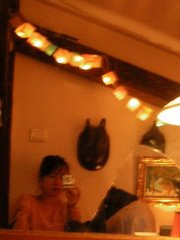
Au début octobre, l’Institut Ricci de Taipei a publié une collection de 26 volumes d’écrits chrétiens chinois conservés à la Bibliothèque Nationale de France. Les éditeurs de la collection sont Nicoals Standaert et Ad Dudink (Université de Louvain) et Nathalie Monnet (Bibliothèque nationale de France)
Tous les textes reproduits ici ont été publiés ou écrits avant 1820, et sont uniques ou très rares. La présente publication reproduit quelque 190 textes, qui ont été classés par sujet. Ils reflètent les préoccupations des publications chinoises sur la science occidentale et la religion aux XVIIe et XVIIIe siècles. Ces écrits couvrent un large éventail de sujets tels que l'anatomie, la philosophie aristotélicienne, la géographie et l'astronomie, ou encore un traité sur les tremblements de terre, des biographies des missionnaires et les convertis, des mémoriaux et des édits.
L'histoire de la collection chinoise conservée à la Bibliothèque nationale de France s'étend sur trois siècles. Les quatre premiers imprimés chinois entrés dans la Bibliothèque Royale en 1668, grâce à l’achat de la collection de Mazarin (1602-1661). Plus tard, en 1684, Philippe Couplet S.J. (1624-1692), accompagné par un converti chinois, Michael Shen Fuzong, offre plusieurs volumes à Louis XIV lors de leur audience avec lui à Versailles.
En 1697, la Bibliothèque royale ajoute une importante collection de livres chinois: 312 fascicules cousus, portant sur 22 titres, que Joachim Bouvet S.J. (1656-1730) rapporte de Chine. En 1700, à son retour de Chine, Jean de Fontaney S.J. (1643-171) ramène d’authentiques écrits de cour publiés par l’Imprimerie impériale située dans la Cité Interdite. En 1708, 113 nouveaux volumes, de très belles éditions en mandchou, sont incorporés à la Bibliothèque. Rédigé en français, le premier catalogue de ces écrits a été établie par Huang Jialüe (Arcade Hoamge ou Hoang), quelques mois avant sa mort en1716. Huang est né en Xinghua (Putian) dans la province de Fujian en 1679 et élevé par des missionnaires pour devenir prêtre. Il vient en France en compagnie de Mgr Artus de Lionne, MdPE (1655-1713), et vit à Paris de 1711 à 1716.
Cette publication est donc un témoignage fascinant sur l'histoire du christianisme chinois ainsi que sur une collection unique conservé dans l'une des plus grandes bibliothèques du monde.








